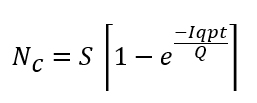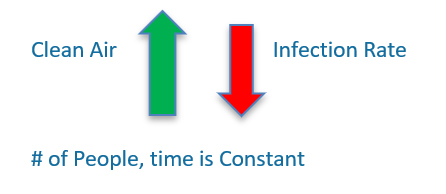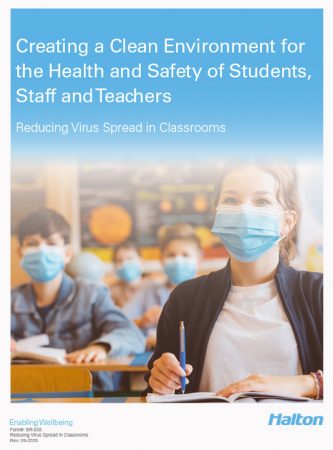Many educational facilities have been struggling with COVID and providing the appropriate ventilation systems in classrooms and other public areas. They may be unaware that there are systems that can help reduce the risk of spread. UVGI air filtration units typically come complete with high-capacity UVGI and MERV filters and can be used safely in any indoor space where there is a risk of virus spread. These units can reduce the risk of airborne infections while creating a clean and safe indoor environment for students, teachers, and staff.
Recommendations for reopening schools and universities
ASHRAE (The American Society of Heating, Refrigerating and Air-Conditioning Engineers) has published extensive recommendations on Coronavirus (COVID-19) with response resources from ASHRAE and others. ASHRAE’s guidance has been formulated to help designers retrofit and plan improvements to indoor air quality, slowing the transmission of viruses via HVAC systems. A couple of the designer’s underlying efforts should be increasing outside air to spaces and treating return air. The designer should also be concerned with mechanical filtration of the supply air and maintaining indoor comfort as defined by the design temperature and relative humidity. Read more on ASHRAE recommendations for reopening schools and universities.
UVGI Air Filtration Units help reduce the probability of airborne infection
UVGI air filtration for classrooms units should have highly efficient UV resistant air filters with a rating of MERV 13 or better. Behind these filters are safe UV-C bulbs that do not produce any respiratory irritant ozone. These particular UV-C bulbs operate at the 254-nanometer wavelength. This wavelength is critical for its germicidal inactivation properties.
Claims of 99% or greater efficiency on UV-C bulbs should be met with some skepticism in real-world applications. Although the UV-C bulbs are 99% efficient in neutralizing viruses, this doesn’t mean that by deploying one of these units, 99% of pathogens present will be destroyed. What is essential to understand is whether the manufacturer can calculate the unit’s clean air delivery rate (CADR) and the probable reduction in airborne infections by using a Wells-Riley mathematical model associated with the airborne transmission of respiratory diseases. The manufacturer can go into greater detail on what the equation is all about. Still, in its most basic terms, it considers the number of people in the room, the intensity of the UV-C bulbs in the device, and the time the air is exposed to the bulbs.
What is CADR
Clean Air Delivery Rate (CADR) is a metric providing the volume of air that has been cleaned of harmful pathogens.
How do you calculate Clean Air Delivery Rate (CADR) for UVGI Air Filtration Units?
How does one calculate CADR (Clean Air Delivery Rate) and reduction in infection probability? Fortunately, there is an industry formula that any competent supplier or manufacturer has access to that can provide this information. It is called the Wells Riley Equation.

- Q = Clean/Uninfected Airflow
- t = Time
- p = # of People
- I = respiratory rate
It is essential to understand what the resulting information indicates.
- Must be calculated to determine UVGI solution overall effectiveness
- Used to calculate infection probabilities in an occupied space
- Probability decreases as exposure time (t) decrease and/or clean airflow (Q) increases
- Infection probabilities for different disinfection solutions can then be compared
- Wells Riley only accounts for airborne infections – infections from close contact can be mitigated with masks, social distancing, and cleaning
That last bullet point is an important consideration. An Ultraviolet Germicidal Irradiation (UVGI) device is used in conjunction with established mitigation protocols such as social distancing, wearing face masks, and increased sanitizing (handwashing, disinfecting.)
When calculating the effectiveness of a system, the essential variables are clean air available, time, the number of people, and respiratory rate (seated, active?)

For example, a typical classroom of 25 students has a ventilation rate of 250 CFM (118 l/s), which is 10 CFM (4.7 l/s) of outside air per student. Adding 1000 CFM (472 l/s) of clean disinfected air reduces the probability of airborne infection by 4.4 times in this example. Fewer people or more Halton Sentinel units in the room would decrease the probability of airborne infection even more. Other infection probability rates can be calculated by application and occupancy.
When choosing your UVGI Air Filtration for classroom devices it is important to understand what its actual clean air delivery rate would be. With that information, you can compare one system to another to determine how much of a reduction in infection probability you will get. Relying solely on an efficiency number (%) does not represent how effective a system would be in reducing infection or neutralizing the virus.
We are here to answer your questions!
Need more information?

Find out more about how Halton Sentinel can help reduce the risk of virus and airborne disease spread while creating a clean and safe indoor environment for staff, teachers, and students.
View our brochure on creating clean environments for the health and safety of Students, Teachers, and Staff.


